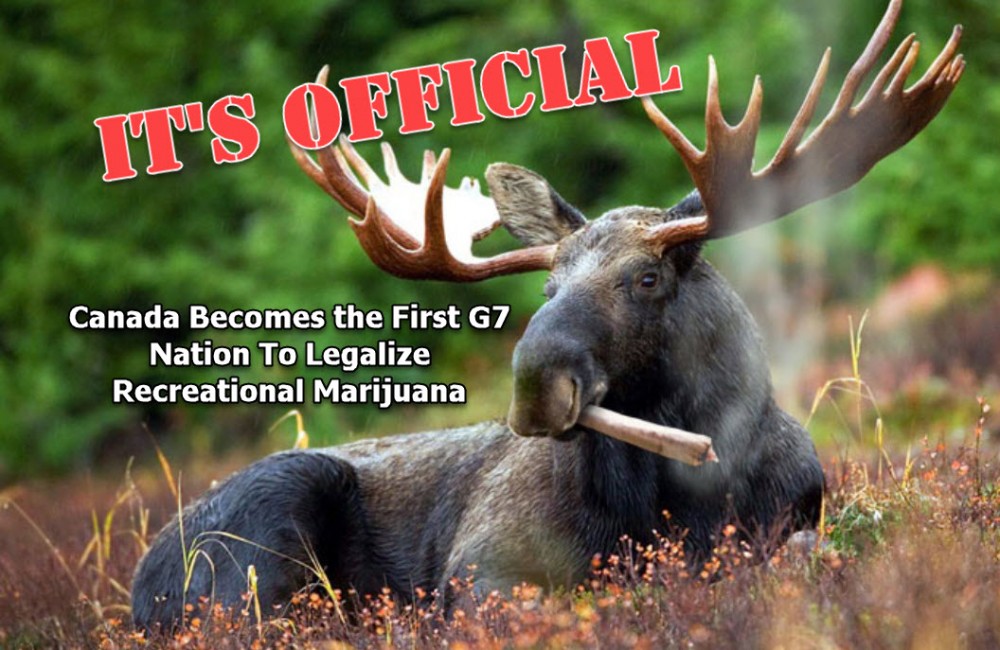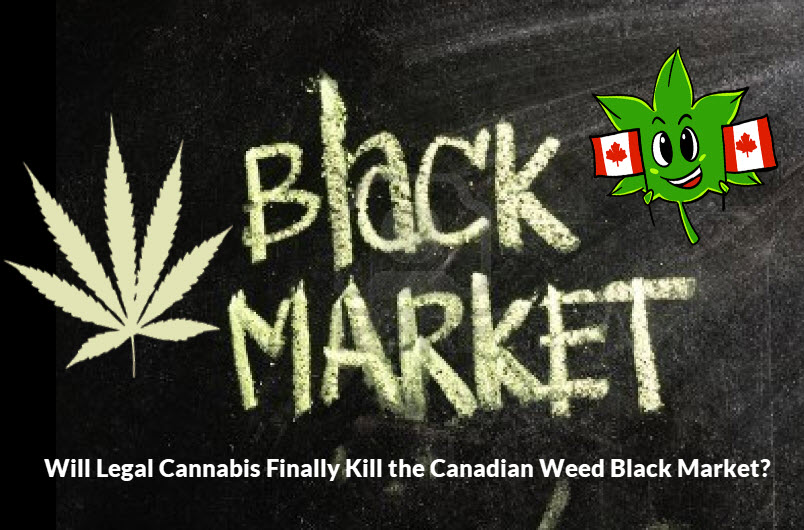A Look Into Canada’s Legal Cannabis Market, One Year Later

This time last year, Canada made global headlines for becoming the first G7 nation to legalize cannabis, and second in the world following after Uruguay.
Though many had high hopes for the Canadian market, it still had its labor pains to deal with.
Here’s a look into the Canadian cannabis market one year later.
Black Market Still Thriving
You’d think that legalizing cannabis would alleviate the issue of the black market, but high prices are still driving consumers to source their medication from illicit sources.
The Canadian Association of Chiefs of Police says that the black market is still proliferating: “We haven’t disrupted the black market significantly at this point, but that was to be expected,” Abbotsford Police Chief Mike Serr tells CBC.CA. “If there is a strong, vibrant dark market out there selling illegal drugs, people will go to that and we need to direct them to the legal market.”
The Liberal government had intentions of weeding away the black market to stop organized crime at its roots, but current figures show that the black market is still very much alive and thriving. In fact, Statistics Canada says that only 29% of cannabis consumers obtain their pot from legal sources, while 4 in 10 Canadians disclosed that they still get at least some of their supply illegally.
“The public don’t know that when they’re going online, typically the first three or four sites that will come up online will be illegal sites to purchase cannabis,” Serr says. “We’re working nationally to try to find some solutions.”
High Costs, Supply Issues
Michael Armstrong, an economics professor, shared with CBC.CA that the high costs combined with location problems and supply have contributed to a booming black market. “In Ontario, we had no stores for six months. Now we’ve got 25 and we’re still waiting for the next 50. That means the legal industry is missing an opportunity to sell product and take a bigger bite out of the black market,” he explains.
Statistics Canada, based on crowdsourced data, reports that one gram of cannabis from government-approved sellers will set you back $10.23, while in the same time period, a gram of pot from illegal sources was just around $5.59.
“People find that the black market is servicing them a lot better than the legal marijuana stores,” says Toronto Lawyer Daniel Brown, VP of the Criminal Lawyers Association. “You can still bet on the black market to buy a larger variety of marijuana for much cheaper.”
It was also known that the Canadian cannabis industry was plagued with shortage issues, one year ago until now. “What the government has done is instituted a lot of red tape, in particular at the retail level, which is making it extremely challenging for licensed producers to roll out product efficiently,” Greg McLeish, Mackie Research Capital analyst, told Market Watch. “What the rules and regulations and red tape are doing is to create what I consider to be a new form of prohibition,” he said, during a phone interview.
Cannabis Became A Major Driver Of Growth To The Economy
Legal cannabis also yielded some positive changes for Canada; for instance, it contributed $8.26 billion to the local economy as of July 2019. It accounted for 9,200 jobs within the sector, says Statistics Canada.
Additionally, legal cannabis also paved the way for research, so that scientists are now able to better understand how cannabinoids affect a multitude of conditions today including cancer, anxiety, and pain.
What’s more, legal cannabis enabled the government to ensure that pot stayed out of the youth’s hands while efficiently allowing them to collect tax revenue. Despite the fact that tax revenues were much lower than expected, cannabis users in Canada can also expect to consume higher quality product because it’s regulated and doesn’t contain any additives.
No Impact On Workplace Safety
An ADP Canada study revealed that 3 out of 4 Canadians thought that legalizing cannabis had no impact on safety and health issues in the workplace. A majority of respondents also believed that it had no significant impact on productivity, work quality, or absenteeism.
Last year, another survey found that 46% of Canadians thought that legalizing cannabis would result in a decrease in productivity, while 43% believed it would cause a drop in work quality. Meanwhile 40% and 55% of respondents thought that cannabis legalization would also lead to an increase in health and safety issues in the workplace.
One year later, it’s good to see that this is not the case and the opposite is true.
“Although only a fraction of Canadian workplaces allow cannabis during the workday, it’s important for every organization to develop proper workplace guidelines and policies, as well as provide training to identify and manage impairment,” says Hendrik Steenkamp, director for HR Advisory for ADP Canada.
What does former CEO of Canopy Growth Bruce Linton think after one year of legalization? What did Canada get right and what did Canada get wrong in the first 12 months? Watch the interview where we ask them just those questions below!
LISTEN TO BRUCE LINTON TALK ABOUT CANADA'S FIRST YEAR OF LEGAL WEED.
CANADIAN CANNABIS, A YEAR LATER, READ MORE..
SEE THE FIRST PIECE OF WEED SOLD IN CANADA AT MIDNIGHT.








